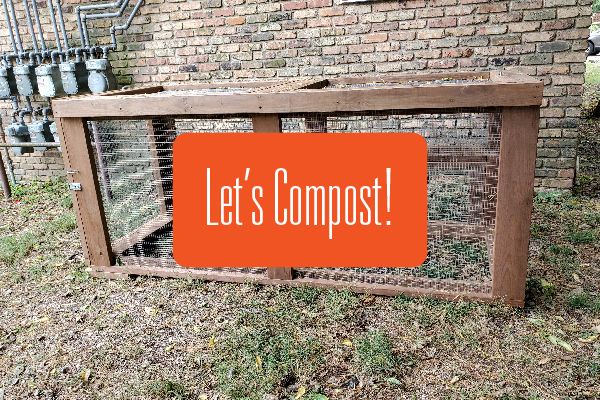Let's Compost!
Let's Compost!

If you live in our buildings near downtown, you may have seen our shiny new compost bin at 611 W. Healey! We are super excited to be able to offer this new amenity to residents. But what is composting and what do you need to do to participate?
What is Composting?
Composting is a method of or recycling organic matter (like leaves) and food scraps into a fertilizer that is beneficial for plants. It’s a great way to reduce your households’ impact on the environment by both reducing landfill waste and limiting methane gas!
It sounds complicated, but it is a fairly simple process of layering compostable kitchen scraps and grass clippings (greens) and organic matter such as dead leaves or pine needles (browns).
How Can I Compost?
Composting is a pretty simple process. Unless you live at 609 W. Healey you probably don’t want to have to run out to the bin every time you generate food scraps. You probably want to invest in a countertop compost bin, which can store a few days worth of scraps at a time without attracting bugs or smelling up your space.
Once you have that you can begin collecting scraps. Not every kitchen scrap is compostable. You’ll want to check out the infographic here to make sure you’re not including anything that won’t decay properly. Things like meat and dairy can cause a smell and attract pests.
Once you’ve got a few days worth of scraps saved up it’s time to take them to the bin! All you need to do is dump them in and make sure you add a layer of browns and greens to make sure everything decomposes properly. We recommend topping your kitchen scraps off with a handful of dead leaves or pine needles that can be found around the property, or even some of your recycling (just be careful that you don’t add anything that is not supposed to be in there.) You can see a list of some common browns and greens below:
Browns for the Compost Pile
Brown materials for composting include dry or woody plant material. In most cases, these materials are brown, or naturally turn brown:
- Fall leaves
- Pine needles
- Twigs/chipped tree branches/bark
- Sawdust
- Paper (newspaper, writing/printing paper, paper plates and napkins, coffee filters)
- Dryer lint
- Cotton fabric
- Corrugated cardboard (without any waxy/slick paper coatings)
Greens for the Compost Pile
Green materials for composting consist mostly of wet or recently growing materials. Green materials are usually green or come from plants that were green at some point. But this is not always the case.
- Grass clippings
- Coffee grounds/tea bags
- Vegetable and fruit scraps
- Trimmings from perennial and annual plants
- Annual weeds that haven't set seed
- Eggshells
The Ratio
Maintaining a proper ratio for the compost bin is what allows everything to decompose without causing a smell. If the bin begins to smell you should call or email Royse + Brinkmeyer so we can address the problem.
Generally, a ratio of three- or four-parts browns to one-part greens is great, but you do not need to be exact about it.
If we do not get a good mix of brown and green materials, the compost pile may not heat up, may take forever to breakdown, and may start stinking up the place. These issues can usually be remedied easily by tweaking the ratio.
If you find that your compost pile is not heating up, then you may need to add more green material to the compost. If you find that the compost pile is starting to smell, we may need to add more browns.
And that’s it!
In the end, decomposition happens. It is a natural process. Pile your compostables, turn them (or not), and in time, we will have compost. It really is that simple.
You might also like
Royse + Brinkmeyer News










